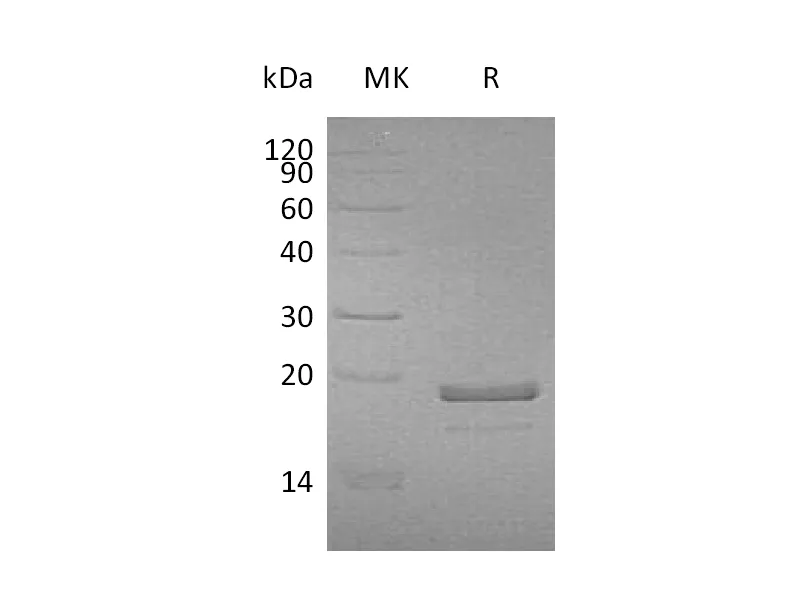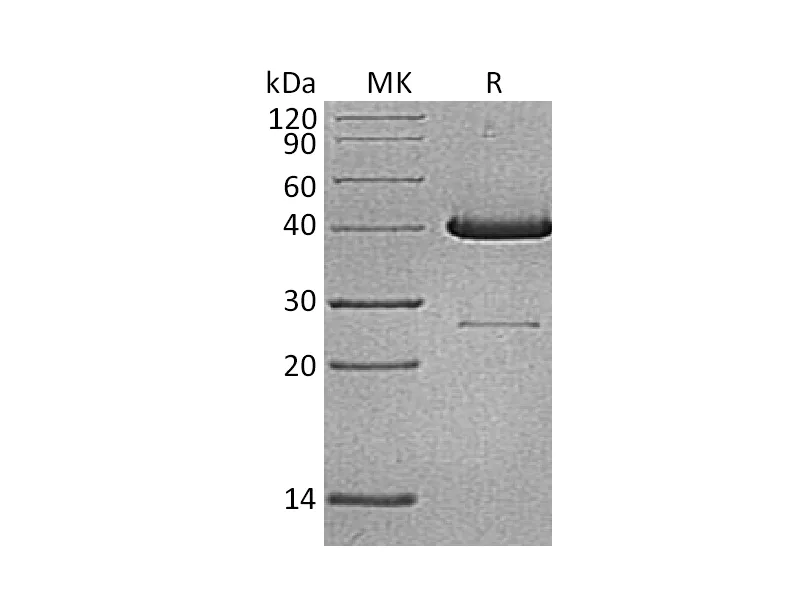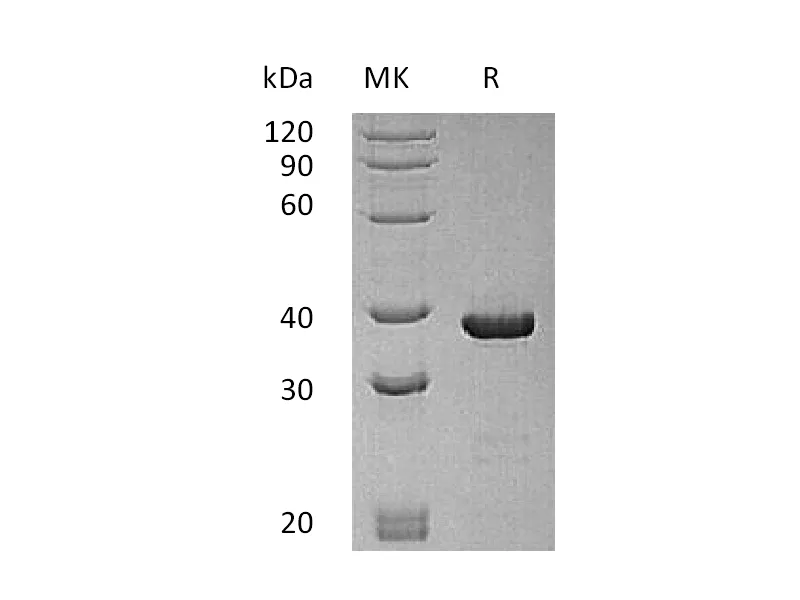| 产品名称 |
Recombinant Human SUMO1 (N-6His) |
| 英文名称 |
SUMO1/Small ubiquitin-related modifier 1 |
| 纯度 |
Greater than 95% as determined by reducing SDS-PAGE |
| 内毒素 |
<1 EU/µg as determined by LAL test. |
| 蛋白构建 |
Recombinant Human Small Ubiquitin-Related Modifier 1 is produced by our E.coli expression system and the target gene encoding Met1-Val101 is expressed with a 6His tag at the N-terminus. |
| Accession |
AAH66306 |
| 表达宿主 |
E.coli |
| 种属 |
Human |
| 预测分子量 |
13.7 KDa |
| 制剂 |
Lyophilized from a 0.2 μm filtered solution of 50mM Tris-HCl, 100mM NaCl, 1mM DTT, pH 8.5 . |
| 运输方式 |
The product is shipped at ambient temperature.Upon receipt, store it immediately at the temperature listed below. |
| 稳定性&储存 |
Store at ≤-70°C, stable for 6 months after receipt.Store at ≤-70°C, stable for 3 months under sterile conditions after opening. Please minimize freeze-thaw cycles. |
| 复溶 |
Always centrifuge tubes before opening.Do not mix by vortex or pipetting.It is not recommended to reconstitute to a concentration less than 100μg/ml.Dissolve the lyophilized protein in distilled water.Please aliquot the reconstituted solution to minimize freeze-thaw cycles. |
| 分子别名 |
| Small Ubiquitin-Related Modifier 1; SUMO-1; GAP-Modifying Protein 1; GMP1; SMT3 Homolog 3; Sentrin; Ubiquitin-Homology Domain Protein PIC1; Ubiquitin-Like Protein SMT3C; Smt3C; Ubiquitin-Like Protein UBL1; SUMO1; SMT3C; SMT3H3; UBL1 |
| 背景介绍 |
| Small Ubiquitin-Related Modifier 1 (SUMO1) is an Ubiquitin-like protein that belongs to the ubiquitin family with SUMO subfamily. It is a family of small, related proteins that can be enzymatically attached to a target protein by a post-translational modification process termed sumoylation. SUMO1 functions in a manner similar to ubiquitin in that it is bound to target proteins as part of a post-translational modification system. This post-translational modification on lysine residues of proteins plays a crucial role in a number of cellular processes such as nuclear transport, DNA replication and repair, mitosis and signal transduction. SUMO1 is involved in a variety of cellular processes, such as nuclear transport, transcriptional regulation, apoptosis, and protein stability. SUMO1 is not active until the last four amino acids of the carboxy-terminus are cleaved off. Polymeric SUMO1 chains are also susceptible to polyubiquitination which functions as a signal for proteasomal degradation of modified proteins and may also regulate a network of genes involved in palate development. |
注意事项
本司产品仅用于科研,不用于临床诊断和治疗




